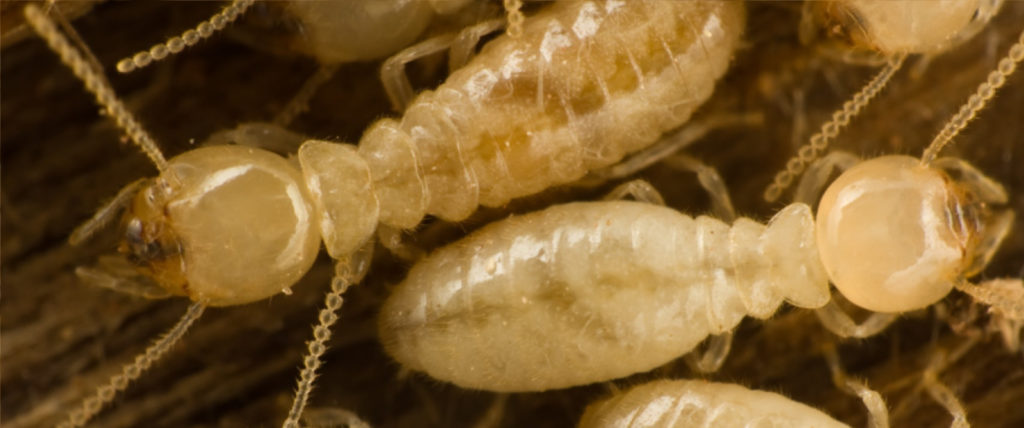
Termites
A termite colony is like a whole city of people totally focused on growing and expanding. The colony has a sophisticated caste system and can be made up of millions of termites. Their goal is to make your home into a gigantic meal that can feed their entire family. Ants with wings look very similar to termites. Don’t be fooled! Ants have two sets of wings with the front pair larger than the hind pair. Both sets of termite wings look the same.
SUBTERRANEAN TERMITES
The members of the subterranean termite family consist of:
- King and Queen
- Workers
- Nymphs
- Soldiers
- Winged Reproductives
Species vary throughout the United States, but subterranean termites are the most likely termite to attack your home.
Their colonies are typically underground and colonize and travel through above-ground tube systems that they have created. It's very possible that you don’t ever realize that you have these problematic pests until a professional discovers how much damage they have actually done to your home. They squeeze through cracks into your home in search of wood and moisture. They also enter through expansion joints, foundation cracks, tiny gaps and plumbing entries. Once termites have entered your home, it almost always requires a professional to get rid of them.
DRYWOOD TERMITES
In many places of the United States, drywood and Formosan termites can cause unique problems. Formosans are very aggressive and destructive subterranean termites typically found in the souther U.S. as well as Hawaii. Drywood termites are found in the southeast U.S. as well as the southwest U.S., but don’t require contact with soil in order to stay alive. They can also damage other things in your home such as furniture and any detached wood items. Drywood swarmers are know to have red heads.
